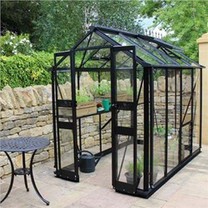Greenhouse construction must consider its durability. The durability of the greenhouse is affected by factors such as the aging resistance of greenhouse materials and the carrying capacity of the main structure of the greenhouse. In addition to the strength of the light-transmitting material, the durability of the light-transmitting material is also manifested in the continuous attenuation of the light transmittance of the material with the extension of time, and the attenuation of the light transmittance is a decisive factor affecting the service life of the light-transmitting material. Generally, the service life of steel structure greenhouse is more than 15 years. It is required that the design wind and snow load use the maximum load once in 25 years; the service life of the bamboo-wood structure simple greenhouse is 5 to 10 years, and the design wind and snow load use the maximum load once in 15 years.
Since the greenhouse has been operating in a high temperature and high humidity environment for a long time, the surface anticorrosion of the components has become one of the important factors affecting the service life of the greenhouse. Steel structure greenhouse, the main structure of the force is generally thin-walled steel, which has poor corrosion resistance. Hot-dip galvanized surface anti-corrosion treatment must be used in the greenhouse. The thickness of the coating reaches 150-200 microns or more, which can guarantee 15 years of use life. For the wooden structure or steel welded truss structure greenhouse, it is necessary to ensure that the surface anti-corrosion treatment is done once a year.
The temperature and light performance of plastic greenhouses
The plastic greenhouse can make full use of solar energy, has a certain heat preservation effect, and regulates the temperature and humidity in the shed within a certain range by rolling the film.
Plastic greenhouses in the northern regions: mainly play the role of warming cultivation in early spring and late autumn. It can be 30-50 days earlier in spring and 20-25 days later in autumn. Overwintering cultivation is not allowed. In the southern region: In addition to heat preservation of vegetables and flowers in winter and spring, and overwintering cultivation (leaf vegetables), it can also be replaced with a awning for shading and cooling, rain, wind, and hail prevention in summer and autumn.
Plastic greenhouses are generally not heated indoors, and they rely on the greenhouse effect to accumulate heat. The minimum temperature is generally 1~2℃ higher than the outdoor temperature, and the average temperature is higher than 3~10℃.
The light transmittance of plastic greenhouse is generally 60%~75%. In order to ensure the basic balance of the average light throughout the day, the plan layout of the greenhouse is mostly extended from the north to the south.
The plastic greenhouse is an unheated, single-span arched roof structure greenhouse with plastic film as the covering material.
Plastic greenhouse features: easy to construct, easy to use, less investment, it is a simple protective field cultivation facility. With the development of the plastic industry, it is widely adopted by countries all over the world.






